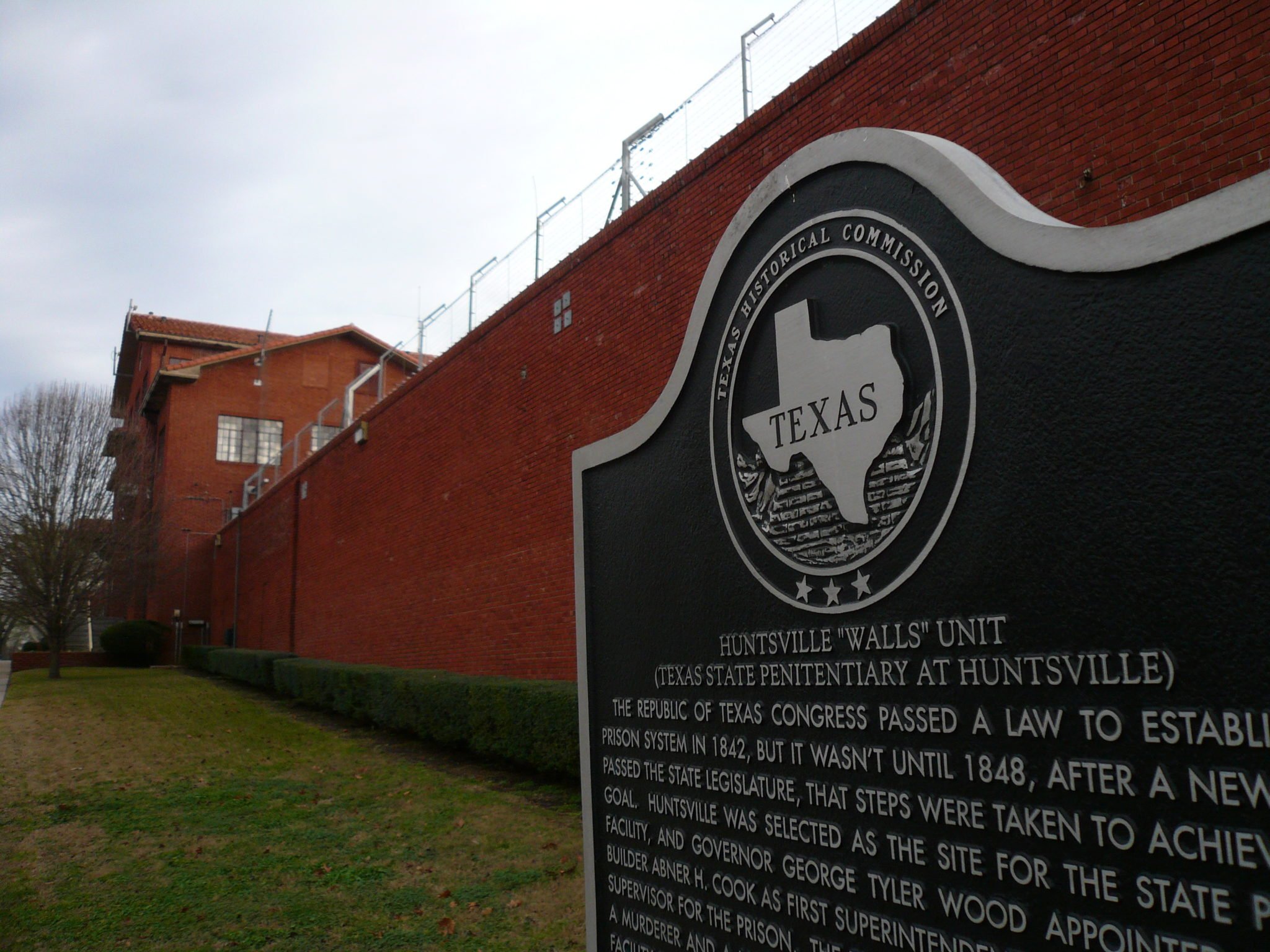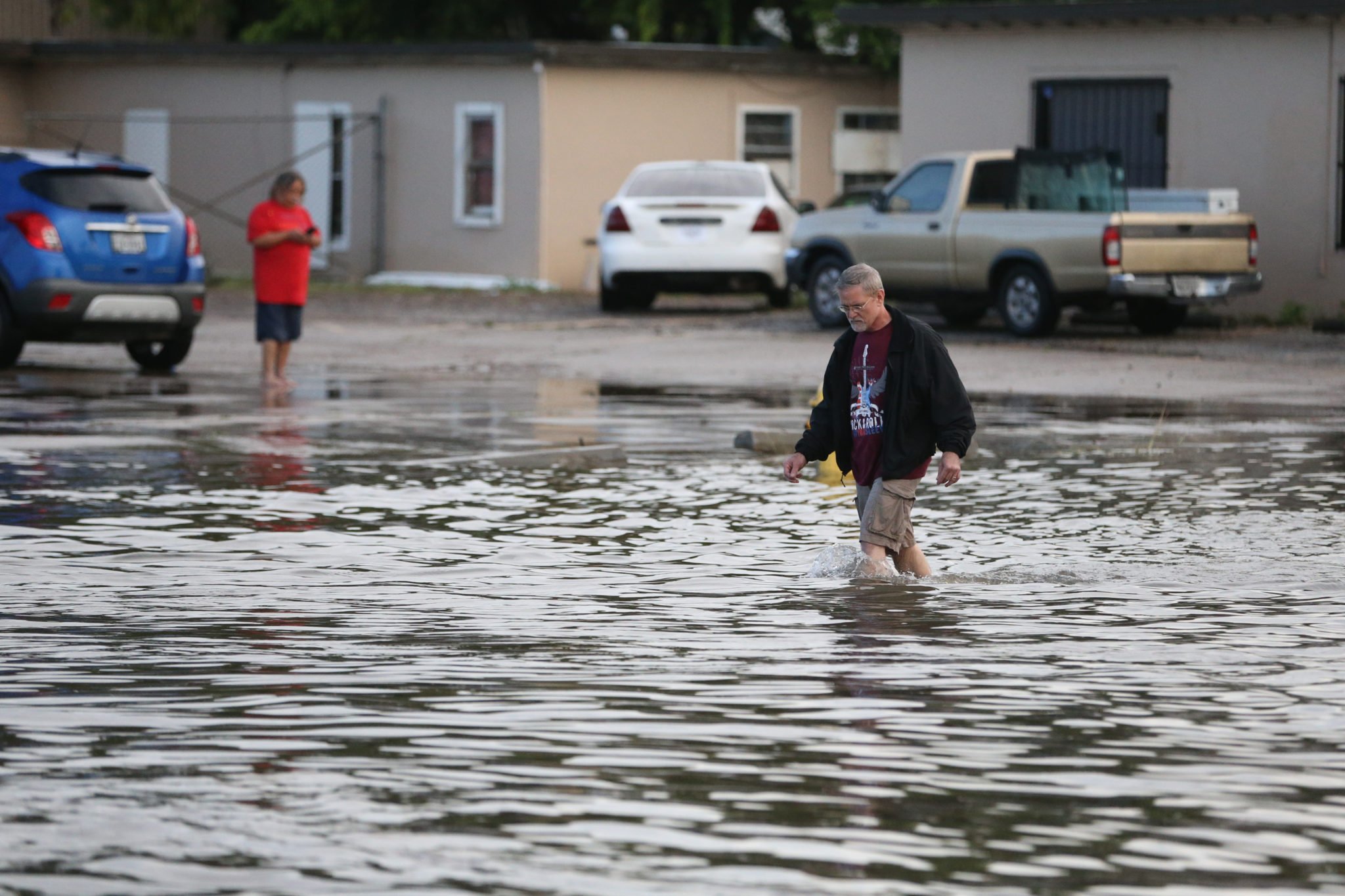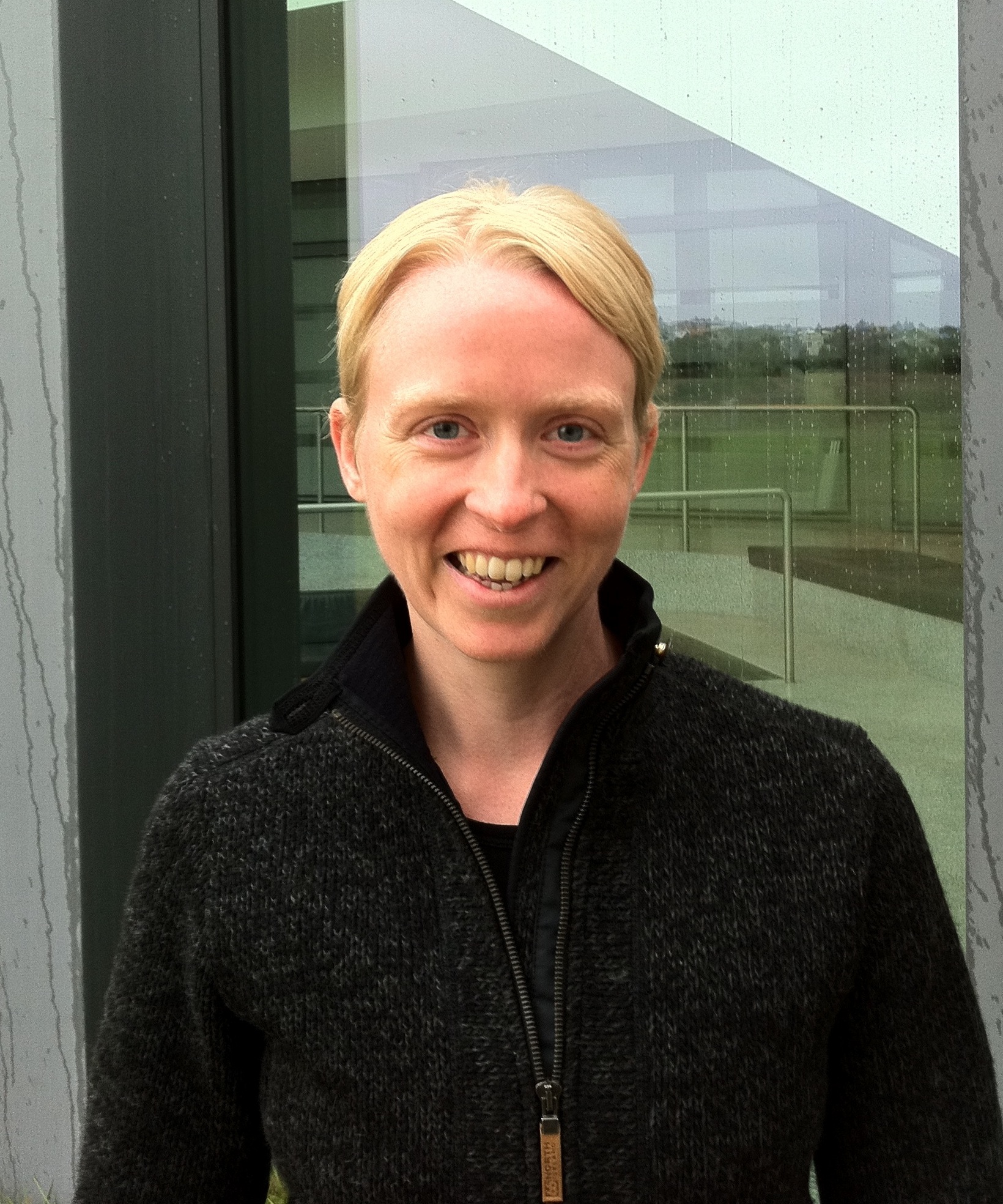
Climate Change and Public Health: Q&A with Adele Houghton

This is Part Thirteen in an occasional series of Q&As with Texans involved in issues of the environment and energy. (Read Part One with Bee Moorhead here, Part Two with Andy Sansom here, Part Three with Katherine Hayhoe here, Part Four with Patrick Kennedy here, Part Five with Michael Banks here, Part Six with Gabriel Eckstein here, Part Seven with John Nielsen-Gammon here, Part Eight with Tad Patzek here, Part Nine with Charles Porter here, Part 10 with Carlos Perez de Alejo here, Part 11 with Kate Galbraith here, and Part 12 with John Nielsen-Gammon here.)
Adele Houghton is the founder of Biositu, LLC, a Houston-based consulting firm dedicated to, in her words: “leveraging environmental sustainability to enhance community health.” The idea is that the buildings we occupy, the streets we walk and drive on and the landscapes that surround us can mean the difference between life and death when it comes to extreme climatic events. As the effects of climate change continue to threaten vulnerable populations across the world, Houghton believes it is more important than ever for cities and states to prepare their communities with that in mind.
Government agencies, professional associations and developers hire Biositu to help them plan and build in a way that safeguards the environment, but also protects communities from the current and future effects of climate change. After becoming a licensed architect at 29, Houghton pursued a master’s degree in public health at Johns Hopkins.
A native of Houston, Houghton currently splits her time between her hometown and Austin, and travels across the country to present her research. Our Q&A, edited for clarity and brevity, follows:
Texas Observer: You founded Biositu because you believe that smart planning and policy are based on the intersection of green building, climate change and public health. I think most people understand the connection between green building and climate change, but can you explain how public health fits in?
Adele Houghton:The way that green building and climate change are talked about most of the time focuses on one aspect of climate change, which has to do with the cause: greenhouse gas emissions. The building sector is a major contributor to greenhouse gas emissions so that’s why there’s been a big effort in areas around energy efficiency and renewable energy to reduce those emissions. But buildings … are also the places where we shelter during storms or other climatic events, and the rest of the built environment—sidewalks, roads, parks—can either contribute to or can reduce the impact of a climatic event.
A climatic event that’s been a major issue in Austin and Central Texas, and actually Texas in general, is extreme heat. [Some] cities and areas are more prone to the effects of a heat wave because they don’t have as much vegetation or as much tree cover, and then you add onto that that maybe there’s a population there that’s susceptible to negative health outcomes during a heat event. People who are not able to afford to keep their air conditioner running during a heat event tend to live in areas that also do not have as much vegetation or as much tree cover. So the built environment is exacerbating and underlying potential health vulnerability to extreme heat.
Other examples that we’ve seen recently are flooding, with the flood down in [Austin’s] Onion Creek a few months ago. That occurred in low-lying areas that are prone to flooding; [that development] probably shouldn’t have been allowed to be built there in the first place. A lot of the time the people who live in those areas are predisposed to being more vulnerable, for example, by not being able to get out. They don’t have a car because they may be from a population that doesn’t have a huge amount of resources. So what you see when you’re adding the public health layering to what’s already discussed in the climate change and green building world is that the type of population that lives or works or travels through a vulnerable area can either reduce the impact of an event [or exacerbate it].
TO: Do you think that this interconnectedness between the three things has gone ignored? Or do you think that now organizations and governments are catching onto the idea that planning for the impacts of climate change and protecting the public’s health go hand in hand?
AH: I think it’s a mixed bag. There’s definitely growing recognition that adaptation is something that needs to be considered alongside with mitigation (reducing greenhouse gas emissions), which has really been the focus of most climate programs until now. Adaptation means responding to and preparing for the changes that are occurring because of climate change … Just over the past two years a number of municipalities and states that have started down the road of reducing their greenhouse gas emissions have also realized they need to prepare for and start responding to these increased risks related to climate change. Whether or not they include a health component is another question. I think adaptation in and of itself is really useful and valuable; when you also bring in some of the population health data that the health department can contribute—particularly if you bring it in in a mapping or geospatial kind of way—it makes it easier to target which areas combine these two vulnerabilities, the vulnerability of the built environment and the vulnerability of the population.
A lot of the time adaptation work that’s going on is focusing almost entirely on infrastructure and buildings and isn’t providing that overlay of looking at how does the population change this equation. Does it make it more necessary to adapt or less necessary to adapt? Or do we need to adapt in a way that we don’t realize because we need to pay attention to the population? It gets even more complicated when you think about how the population is going to change in the future and in a state like Texas that’s particularly important because of the population growth that’s happening here.
TO: I’ve seen some climate change projections that say the higher temperatures are going to be leading to more heat waves and heat-related deaths in urban centers. So in what other ways is Texas especially vulnerable, and are urban centers more vulnerable than rural areas?
AH: That’s a really good question and I think that that’s a question where public health and health data can really help evaluate in a way that would provide information that wouldn’t be there if you were just looking at the infrastructure.
If you were just looking at the infrastructure you’d say because a rural area has got, by definition, mostly vegetative surface and not very many roads and buildings [it might not be as vulnerable]. But if you look demographically there are large areas of the state in rural areas that are lower income with an aging population that is already starting to face issues of mobility and they also potentially don’t have as much security in terms of electricity—if the electricity goes out in a rural area it’s probably not going to be repaired as quickly as in an urban area.
So I can’t tell you based on my own research what exactly is the difference between a rural and an urban area, but those might be some of the questions I would ask if I were to look at the relative vulnerability of rural versus urban areas. There hasn’t been much activity that I’m aware of in Texas in particular around climate change adaptation in rural areas. Most of it has been work in urban areas and again a lot of it has been focusing on greenhouse gas emissions reductions.
TO: Are any Texas cities catching on to the benefits of green building and planning? Are any of them considering public health impacts in their planning and projects?
AH: Most, if not all, of the major cities have started working in the realm of green building at the least. Houston, Dallas, San Antonio, El Paso have all made commitments around green building. Whether or not they explicitly mention climate change is related to the political climate of that city. In Houston, for example, there’s a big push to enhance energy efficiency, but it’s not necessarily talked about in relation to reducing the impact or the cause of climate change; it’s instead talked about in terms of making a building a better business investment because you’re not wasting energy.
There have been efforts to start focusing on climate change as well. For example in San Antonio and in Austin there have been pushes to radically increase the renewable energy use in the city and in particular in city buildings. Houston has also been trying to move their buildings over to renewable energy and they’ve been changing their vehicle fleet over to hybrid and electric vehicles. In terms of bringing public health into the conversation, I worked with the city of Austin a few years ago to develop some vulnerability maps that combine these two vulnerabilities that we’ve been talking about: the built environment and social vulnerability. We mapped out, at the neighborhood level in Travis County, where are the most vulnerable neighborhoods to extreme heat or flooding. The idea behind that project was that it could be used by the climate change program to help inform policy decisions so that resources could be distributed more to those areas that have that combined vulnerability. Since then, very recently the City Council in Austin [passed] a proposal to start addressing adaptation more directly.
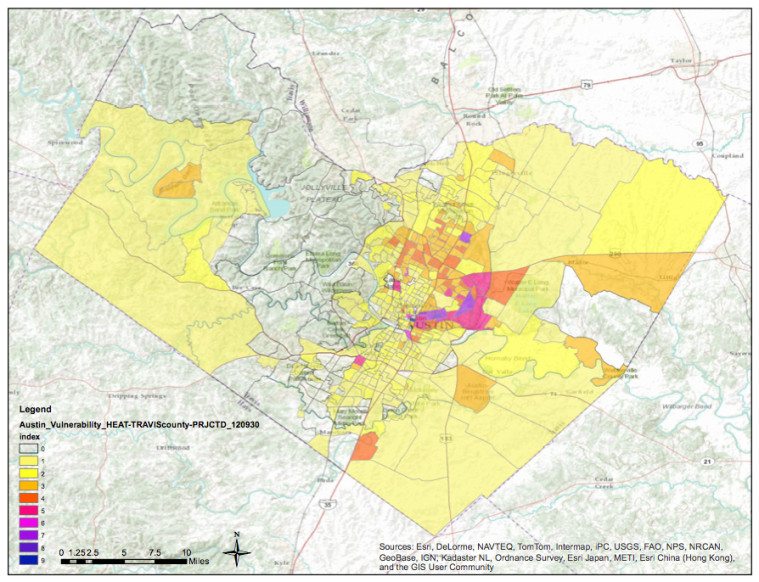
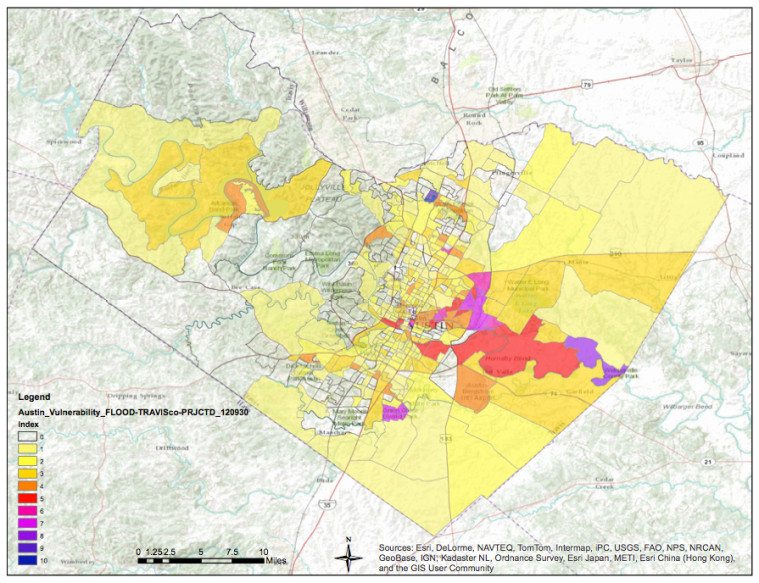
In San Antonio they’ve been incorporating under the umbrella of this “green city of the future” a number of health and wellness initiatives. So the overall topic is green San Antonio, but as a component of it there’s a lot of emphasis on active living, on cycling, on trying to get people to start moving around the city in a way that doesn’t require a single person in a single car, and of course that will have many benefits in many ways. It will benefit their air pollution, because if you can get more people out of their cars that reduces the vehicle emissions. It also will benefit the population by culturally helping them to start reducing their obesity rate.
TO: So you’re talking about some Texas cities that are making efforts toward this, but overall how does Texas compare to other states in terms of at least climate change preparedness?
AH: At the city level I think there’s definitely work going on. … As a state, the politics in the state have made it very difficult to develop some sort of coordinated response to climate change. However, there’s also the fact that the death rate related to heat waves is a major priority of the state health department because it’s the number one killer from a natural disaster standpoint. Then of course flash flooding is also a major concern, in part because it’s the second killer, and it’s also a major cause of injury and is a lot more dramatic when it happens. You don’t see really dramatic images of a heat wave killing people the way that you see dramatic images of what happened in Onion Creek a few months ago.
So I think it gets more press in that sense, and similarly with hurricanes. … I think that we saw the vulnerabilities of Houston during Hurricane Ike in relation to the storm surge in a way that we hadn’t seen in real time in the past. There have definitely been studies done about it and warnings that this could happen and it definitely could become a Katrina situation—something like New Orleans could happen in Houston and I think that’s a growing realization in the city. So that’s definitely become more of a priority as well.
But because there’s no state coordination around the topic … it makes it difficult to justify economically making the changes to the built environment that are needed in order to enhance our resilience. In comparison, there are other states—California and Massachusetts are two great examples—where there’s been a real focus on combining an approach to reducing greenhouse gas emissions as well as changing policies, changing the built environment to enhance resilience and really working across state agencies to coordinate so that the health department becomes a major part of the process.
In California a few years ago they passed the first legislation, as far as I know, that combines green building land use policy with climate change mitigation and adaptation. It’s basically a requirement to the cities and metropolitan regions in the state saying when you’re developing your land use policy you need to be paying attention to how those plans are protecting the environment and reducing greenhouse gas emissions, as well as making your city or region more resilient to climate change. New York state has done something similar … And Massachusetts has done something similar. So it seems like there’s a movement with the states really taking this on in an active and vocal sort of way to say at the state level what we’re going to try to do is coordinate across agencies so that we understand what the vulnerabilities are, [and how] social infrastructure and policy infrastructure can either stand in the way of progress or can benefit resilience, and then leave it to the local [government] to develop strategies and policies and actual projects.
TO: Do you think that’s what needs to happen in Texas? What do you think is the most important change that needs to happen here, and does it need to happen at the state level?
AH: I do think that, assuming we could remove the politicization of the term “climate change” from the discussion, the approach of creating a statewide framework and then leaving it to the locals or to a metropolitan region to figure out what makes the most sense for that region, seems like something that would be politically palatable in Texas. I think the problem is that there’s been so much focus and wasted energy on denying whether or not climate change is happening, and why is it happening that it makes it difficult to take a step back and objectively look at this approach, [which] is very federalist as a foundation so it’s something that Texas politicians would be supportive of if they weren’t so concerned about denying that climate change is happening.

